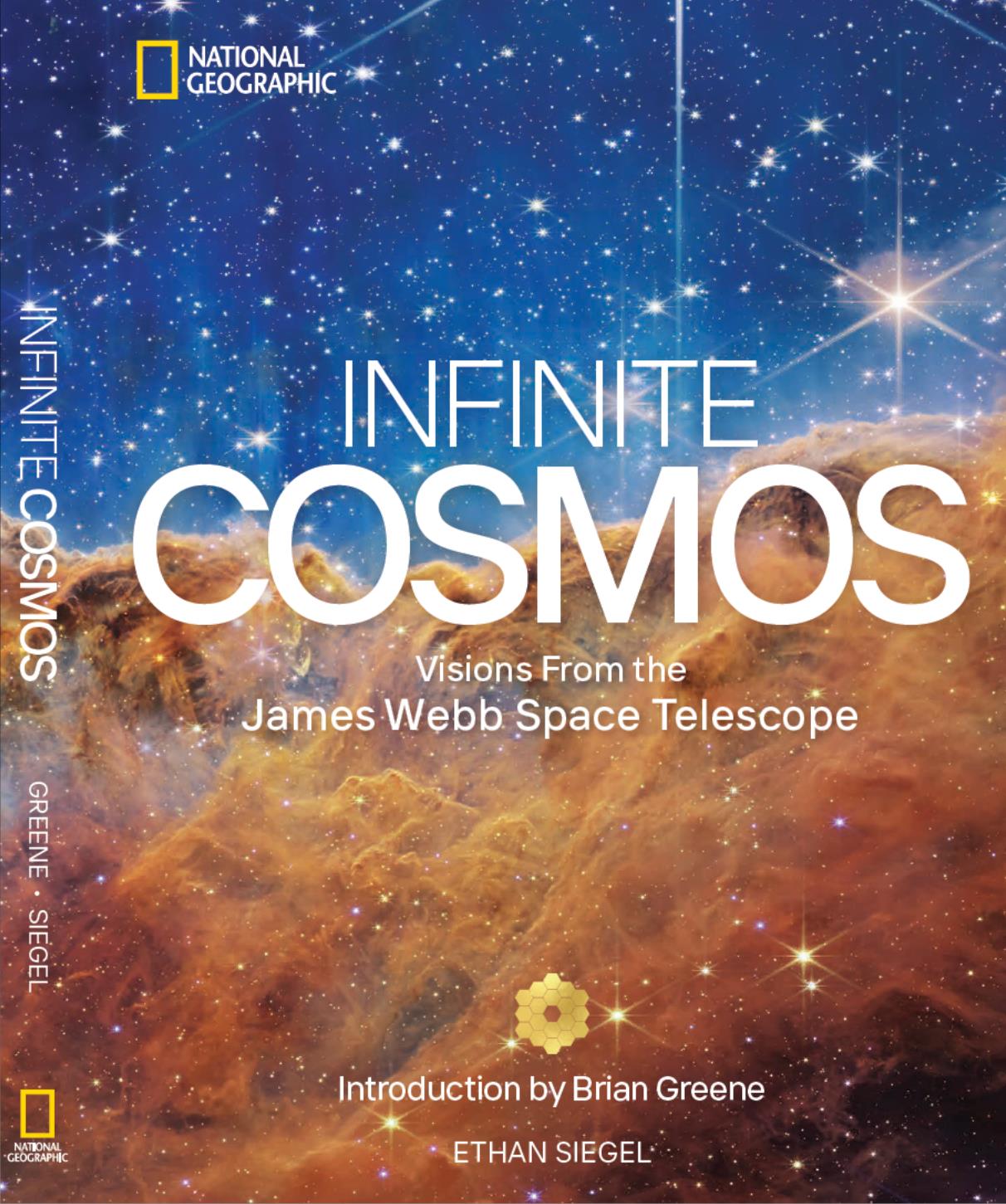Messier Monday: The Most Northern Member of the Virgo Cluster, M85
It’s the first Virgo Cluster galaxy to rise over the horizon in the Northern Hemisphere, and you can find it tonight!
“The image is more than an idea. It is a vortex or cluster of fused ideas and is endowed with energy.” -Ezra Pound
There’s no doubt that out beyond the stars of our galaxy, an entire Universe is out there to explore. As part of our Messier Monday series, we take a look each week at one of the 110 easily-found deep-sky objects making up Charles Messier’s 18th Century catalogue. Consisting of everything from nebulae formed from individual stars to star-forming regions, young stellar clusters, massive globular clusters and entire galaxies, there’s a huge diversity of night sky wonders represented. But among the galaxies, there’s a region of the sky unusually well-represented among the Messier objects.
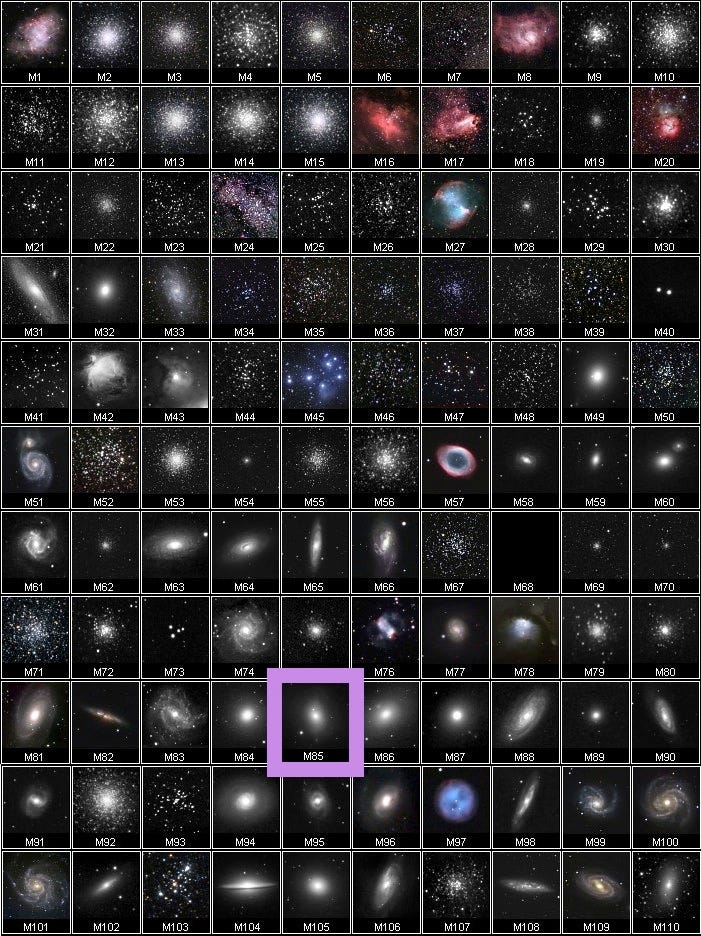
With a whopping 15 galaxies visible through a small telescope clustered in a relatively small region of sky, the Virgo Cluster is the most massive galaxy cluster in our local region of the Universe. Even though it’s located some 50 million light years distant, an excellent pair of binoculars or a modest telescope will begin to reveal its secrets. Although it’s more prominent in spring-or-summer skies from northern latitudes, the northernmost of its members — Messier 85 — can be simply found after sunset from tonight onwards. Here’s where to look.
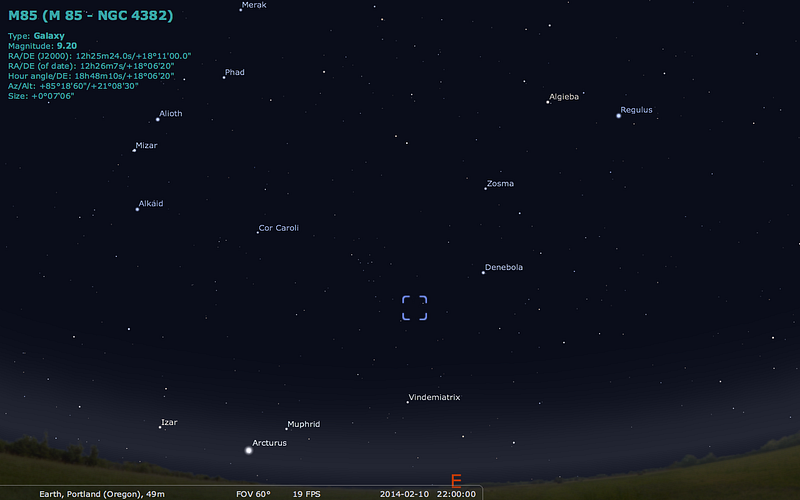
With the Big Dipper flying high in the northeast after sunset and the huge constellation Leo ascending in the east, these two easily identifiable sights will guide you towards the most northerly member of the Virgo cluster. Leo is dominated by its brightest star, Regulus, but its second brightest star, Denebola, is much closer to our target. If you draw a line from Regulus through Denebola and on to Vindemiatrix, you’ve gone too far, but if you look in between those two bright stars and veer back towards the dipper, you’re well on your way to finding Messier 85.
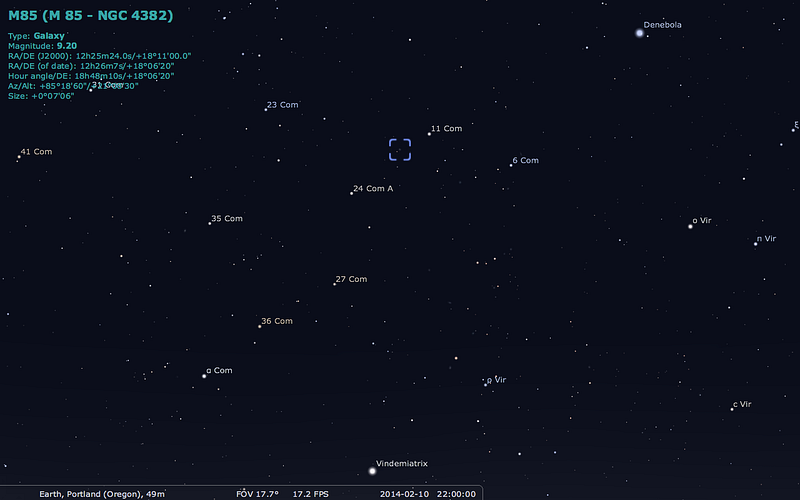
A number of fifth-magnitude, naked-eye stars are visible in this region of the sky, and in this particular case, it’s the two stars 11 Comae Berenices and 24 Comae Berenices that will guide you towards your destination. Roughly midway between these two naked-eye stars, slightly closer towards 11 Comae Berenices (the one closer to Denebola), you’ll find a faint, smudge-like object.
If you can find that in a telescope, that is Messier 85.
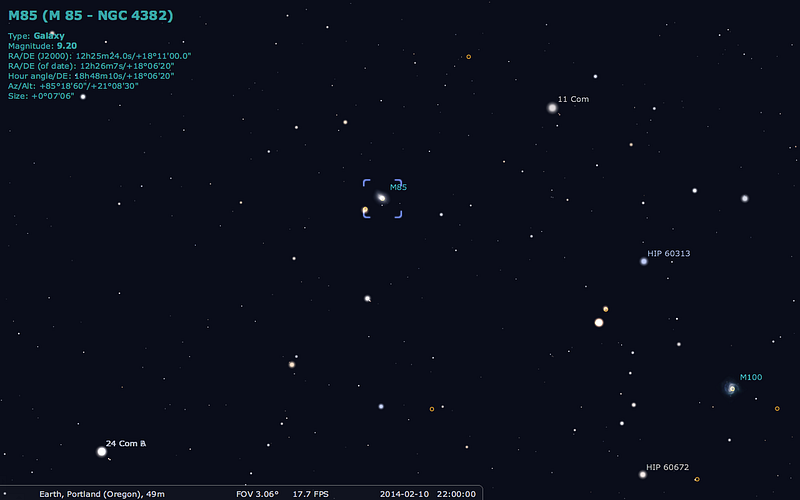
Discovered in 1781 by Messier’s assistant, Pierre Méchain, and catalogued as a very faint nebula without stars, this is actually a giant elliptical galaxy significantly more massive than our own Milky Way, and it lies on the outskirts of the Virgo cluster. Indicated with a yellow arrow in the image below, many other galaxies are visible, and the central region of the cluster can be seen on the lower left. (M100, in the lower right of the image above, is in the center of the image below, for reference, while 11 Comae Berenices is the bright star in the top-center with prominent diffraction spikes.)
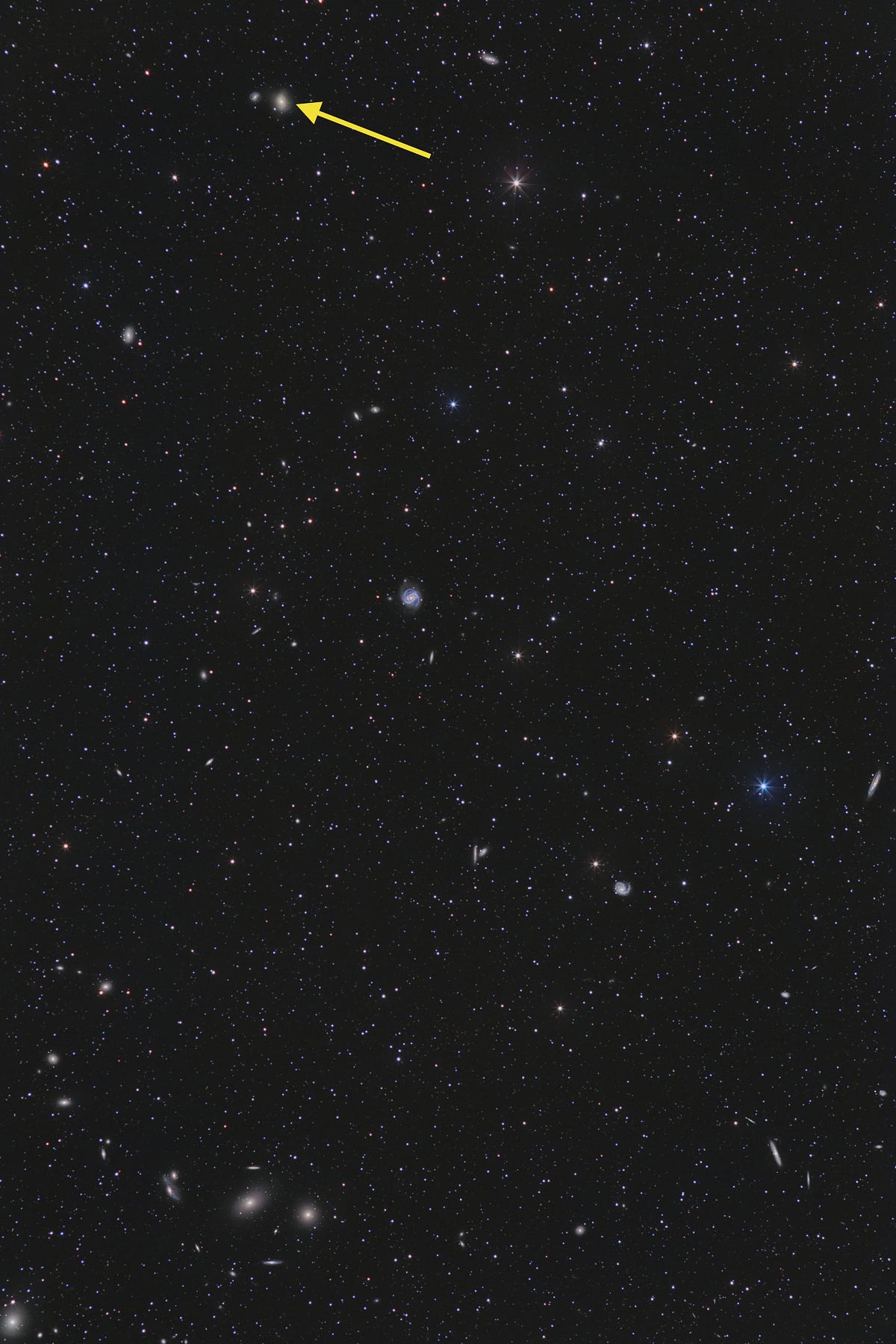
With more than a thousand galaxies in it, the Virgo Cluster is the dominant clump of mass in our local corner of the Universe, yet every galaxy contained therein has its own unique story, in many cases, more interesting than our own.
You see, other than a few small dwarf galaxies that we’ve gobbled up in the past, it’s been a very long time since the Milky Way saw its last major merger. But for a giant elliptical like M85? That’s not the case at all!
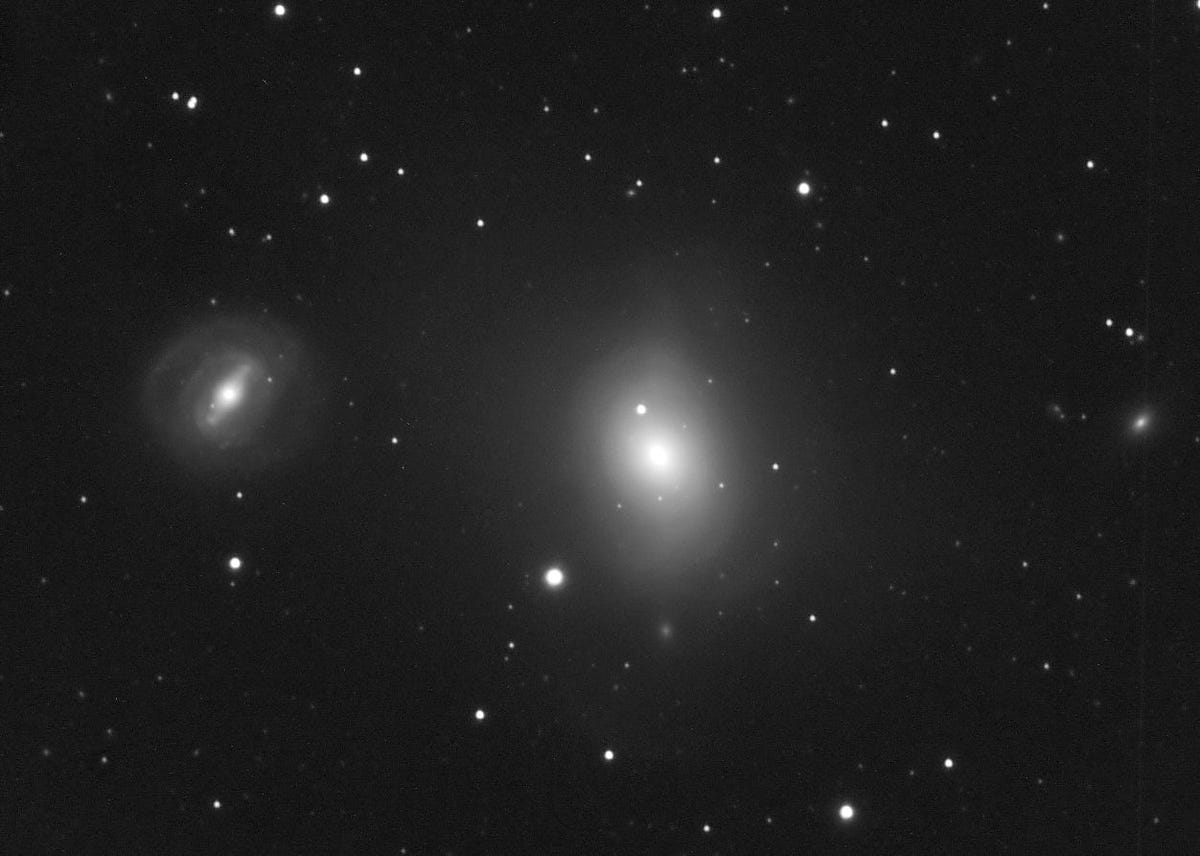
In regions of space where galaxies are sparse — known as the field — galaxies are relatively isolated from one another, and massive, Milky Way-sized galaxies are rare. In our own local group, it’s just us and Andromeda, and the next largest galaxy is less than 10% as massive as we are. And it comes as no surprise that all of the massive galaxies in our nearby region of space are spirals.
But in the densest clusters of matter, where gravitational wells are large, major mergers are common, and it’s these major mergers that destroy the classic spiral structure, cause a burst of star formation, and leave you with an elliptical galaxy where new stars hardly appear to form at all.

We can take a look inside Messier 85 — a giant elliptical galaxy located 60 million light-years away — and see what kinds of stars are located inside.
Unlike our Milky Way, represented by a mix of stars from blue-to-yellow-to-red, only the yellow, orange and red stars are found inside Messier 85, telling us that it hasn’t undergone a period where new stars have formed since the last major merger around four-to-seven billion years ago, and even in the central region, where densities are highest, the newest stars are still three billion years old.
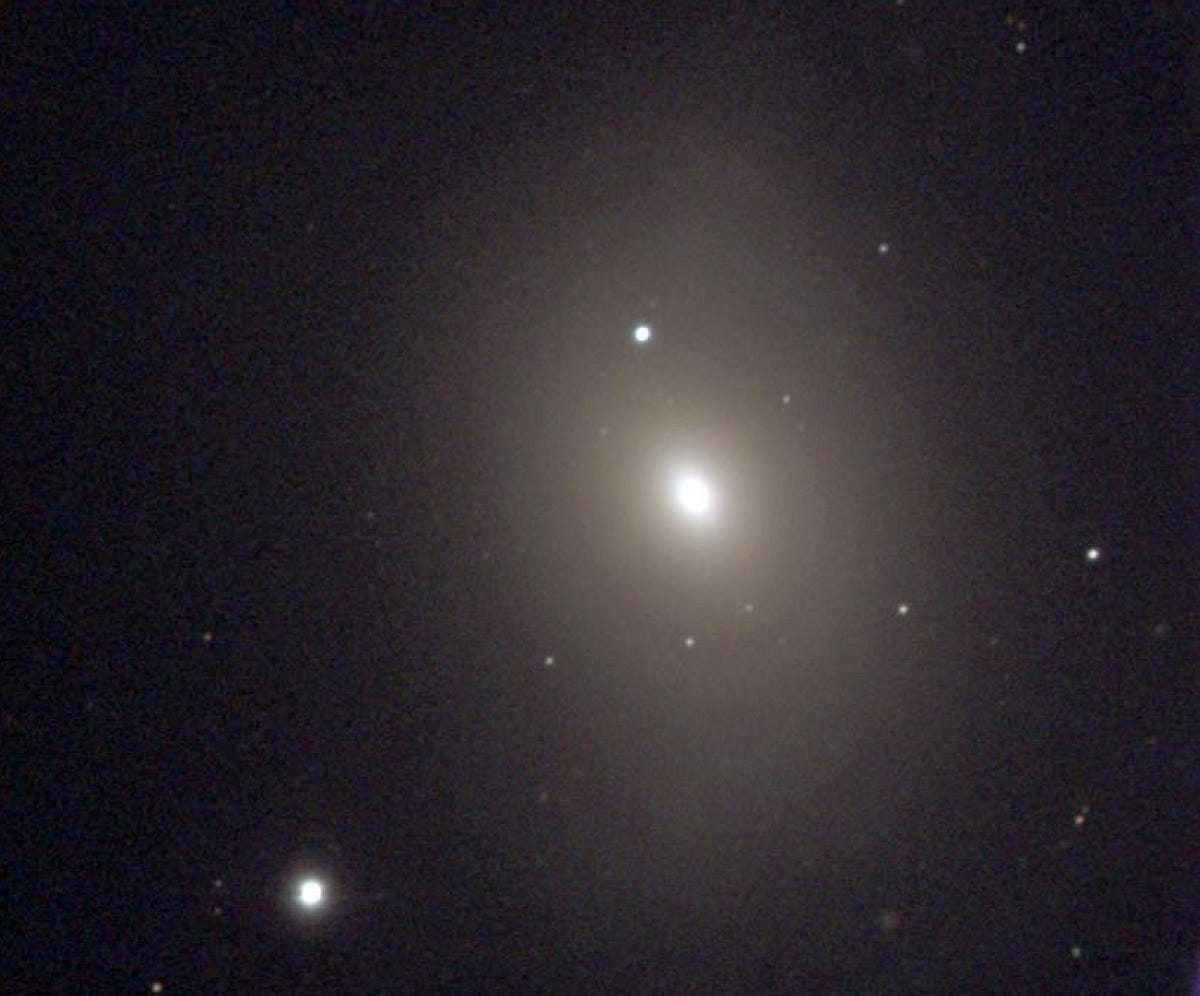
There’s likely a supermassive black hole in the center around 100 million times the mass of our Sun (and 25 times more massive than the one in our galaxy’s center), and it had a type Ia supernova go off in it back in 1960.
More recently, the very first confirmed luminous red nova took place in this galaxy, back in 2006!
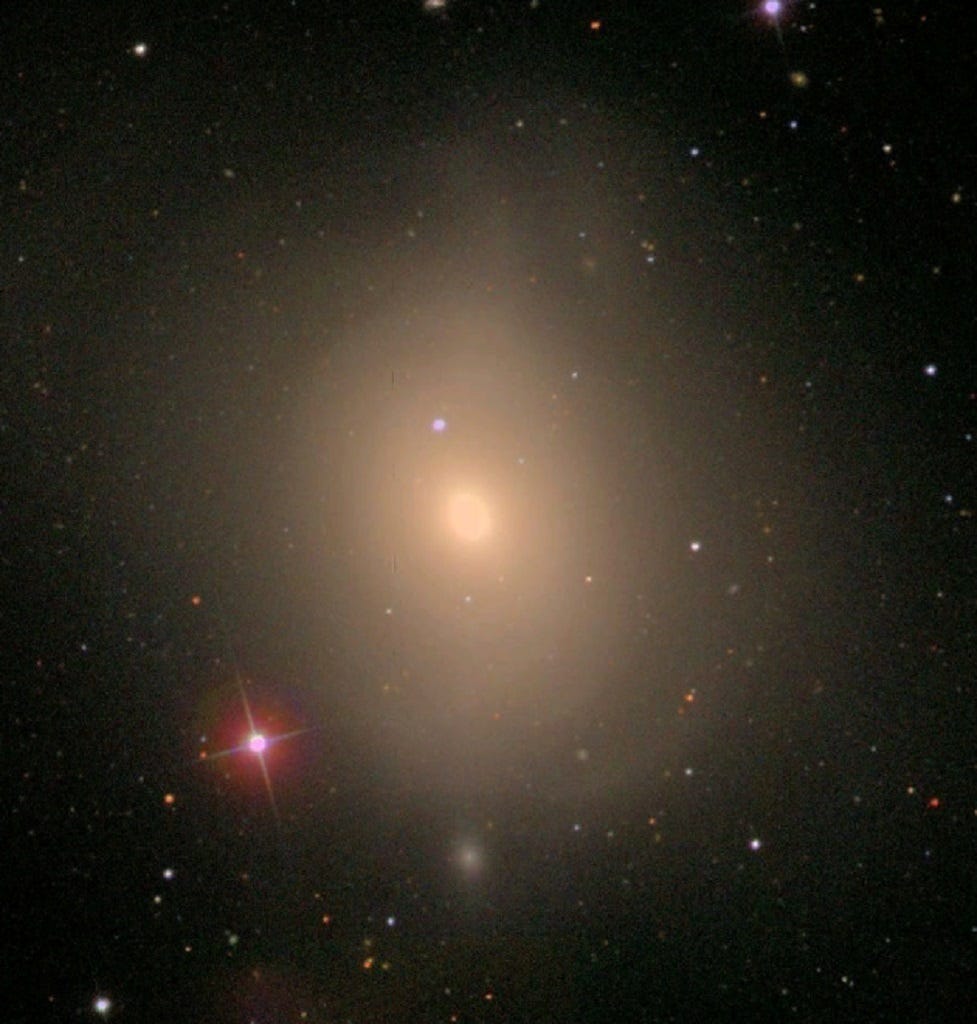
Luminous red novae are far more luminous than regular novae, but somewhat dimmer than supernovae, and occur when two stars collide with one another.
If you’re very astute, you might notice a “shell-like” structure to the gas in this galaxy; that’s inferred to be leftover structure from the last major merger this behemoth underwent, and that’s part of how we date that event at four-to-seven billion years ago. Of course, its nearby companion, the barred spiral NGC 4394, will likely change that in the not-too-distant future!
In the meantime, the best, highest-resolution image of this island Universe comes courtesy of the Hubble Space Telescope.
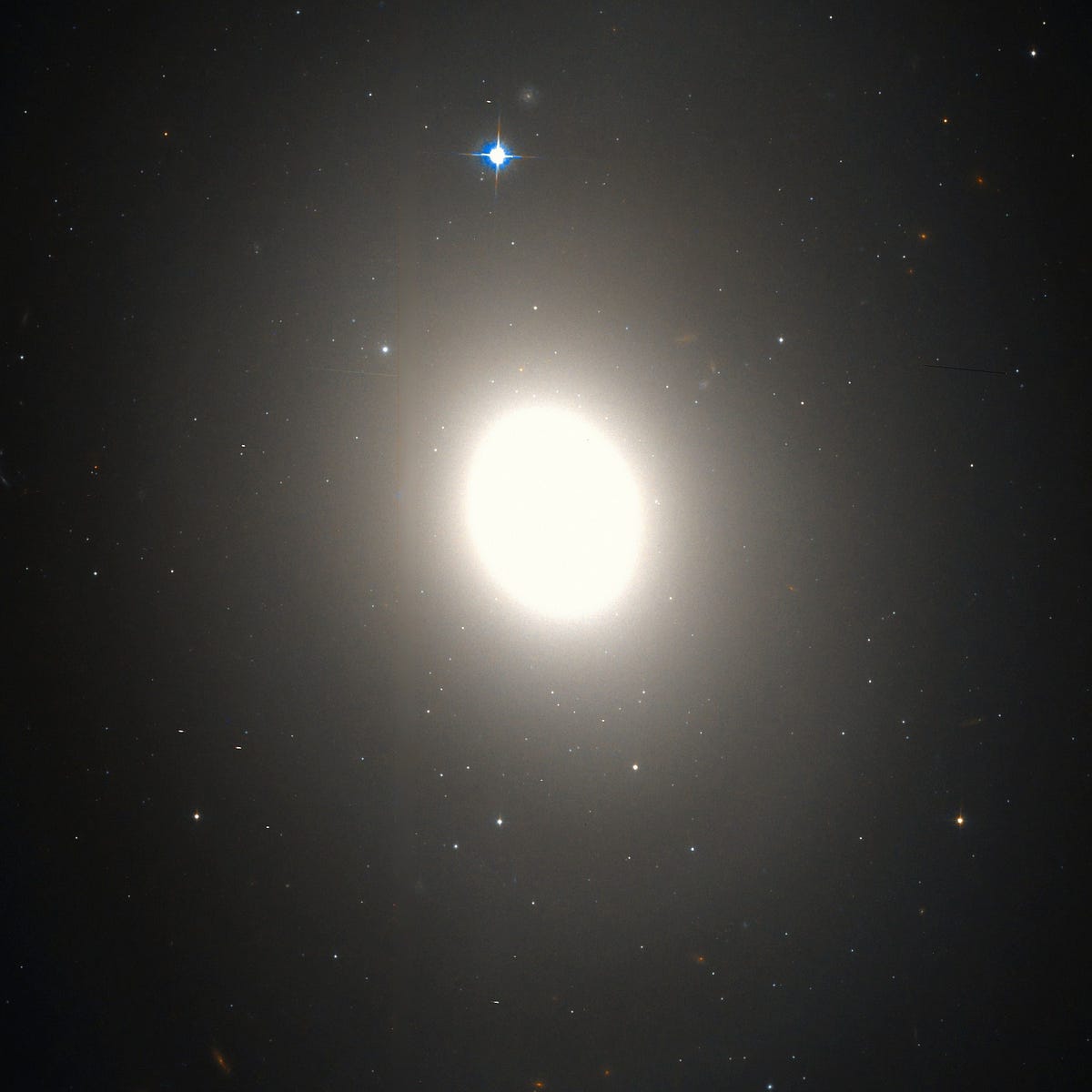
If you look closely, you can see a wondrous array of background galaxies, some even through the halo of this giant elliptical!

Eventually, all the galaxies of the Virgo cluster will merge together, creating a giant elliptical the likes of which we’ve yet to see in our Universe. This one — Messier 85 — may be one of the very last galaxies to join in that, in a process that’s likely to take many tens of billions of years, or multiple times the current age of the Universe!
And with that, today’s Messier Monday comes to a close. If you like, take a look back at all our previous Messier Mondays so far:
- M1, The Crab Nebula: October 22, 2012
- M2, Messier’s First Globular Cluster: June 17, 2013
- M5, A Hyper-Smooth Globular Cluster: May 20, 2013
- M7, The Most Southerly Messier Object: July 8, 2013
- M8, The Lagoon Nebula: November 5, 2012
- M11, The Wild Duck Cluster: September 9, 2013
- M12, The Top-Heavy Gumball Globular: August 26, 2013
- M13, The Great Globular Cluster in Hercules: December 31, 2012
- M15, An Ancient Globular Cluster: November 12, 2012
- M18, A Well-Hidden, Young Star Cluster: August 5, 2013
- M20, The Youngest Star-Forming Region, The Trifid Nebula: May 6, 2013
- M21, A Baby Open Cluster in the Galactic Plane: June 24, 2013
- M25, A Dusty Open Cluster for Everyone: April 8, 2013
- M29, A Young Open Cluster in the Summer Triangle: June 3, 2013
- M30, A Straggling Globular Cluster: November 26, 2012
- M31, Andromeda, the Object that Opened Up the Universe: September 2, 2013
- M32, The Smallest Messier Galaxy: November 4, 2013
- M33, The Triangulum Galaxy: February 25, 2013
- M34, A Bright, Close Delight of the Winter Skies: October 14, 2013
- M36, A High-Flying Cluster in the Winter Skies: November 18, 2013
- M37, A Rich Open Star Cluster: December 3, 2012
- M38, A Real-Life Pi-in-the-Sky Cluster: April 29, 2013
- M39, The Closest Messier Original: November 11, 2013
- M40, Messier’s Greatest Mistake: April 1, 2013
- M41, The Dog Star’s Secret Neighbor: January 7, 2013
- M42, The Great Orion Nebula: February 3, 2014
- M44, The Beehive Cluster / Praesepe: December 24, 2012
- M45, The Pleiades: October 29, 2012
- M46, The ‘Little Sister’ Cluster: December 23, 2013
- M47, A Big, Blue, Bright Baby Cluster: December 16, 2013
- M48, A Lost-and-Found Star Cluster: February 11, 2013
- M50, Brilliant Stars for a Winter’s Night: December 2, 2013
- M51, The Whirlpool Galaxy: April 15th, 2013
- M52, A Star Cluster on the Bubble: March 4, 2013
- M53, The Most Northern Galactic Globular: February 18, 2013
- M56, The Methuselah of Messier Objects: August 12, 2013
- M57, The Ring Nebula: July 1, 2013
- M60, The Gateway Galaxy to Virgo: February 4, 2013
- M63, The Sunflower Galaxy: January 6, 2014
- M65, The First Messier Supernova of 2013: March 25, 2013
- M66, The King of the Leo Triplet: January 27, 2014
- M67, Messier’s Oldest Open Cluster: January 14, 2013
- M71, A Very Unusual Globular Cluster: July 15, 2013
- M72, A Diffuse, Distant Globular at the End-of-the-Marathon: March 18, 2013
- M73, A Four-Star Controversy Resolved: October 21, 2013
- M74, The Phantom Galaxy at the Beginning-of-the-Marathon: March 11, 2013
- M75, The Most Concentrated Messier Globular: September 23, 2013
- M77, A Secretly Active Spiral Galaxy: October 7, 2013
- M78, A Reflection Nebula: December 10, 2012
- M79, A Cluster Beyond Our Galaxy: November 25, 2013
- M81, Bode’s Galaxy: November 19, 2012
- M82, The Cigar Galaxy: May 13, 2013
- M83, The Southern Pinwheel Galaxy, January 21, 2013
- M86, The Most Blueshifted Messier Object, June 10, 2013
- M92, The Second Greatest Globular in Hercules, April 22, 2013
- M93, Messier’s Last Original Open Cluster, January 13, 2014
- M94, A double-ringed mystery galaxy, August 19, 2013
- M95, A Barred Spiral Eye Gazing At Us, January 20, 2014
- M96, A Galactic Highlight to Ring in the New Year, December 30, 2013
- M97, The Owl Nebula, January 28, 2013
- M99, The Great Pinwheel of Virgo, July 29, 2013
- M101, The Pinwheel Galaxy, October 28, 2013
- M102, A Great Galactic Controversy: December 17, 2012
- M103, The Last ‘Original’ Object: September 16, 2013
- M104, The Sombrero Galaxy: May 27, 2013
- M106, A Spiral with an Active Black Hole: December 9, 2013
- M108, A Galactic Sliver in the Big Dipper: July 22, 2013
- M109, The Farthest Messier Spiral: September 30, 2013
And if you enjoyed that, come back next Monday, where another night-sky wonder awaits us!




